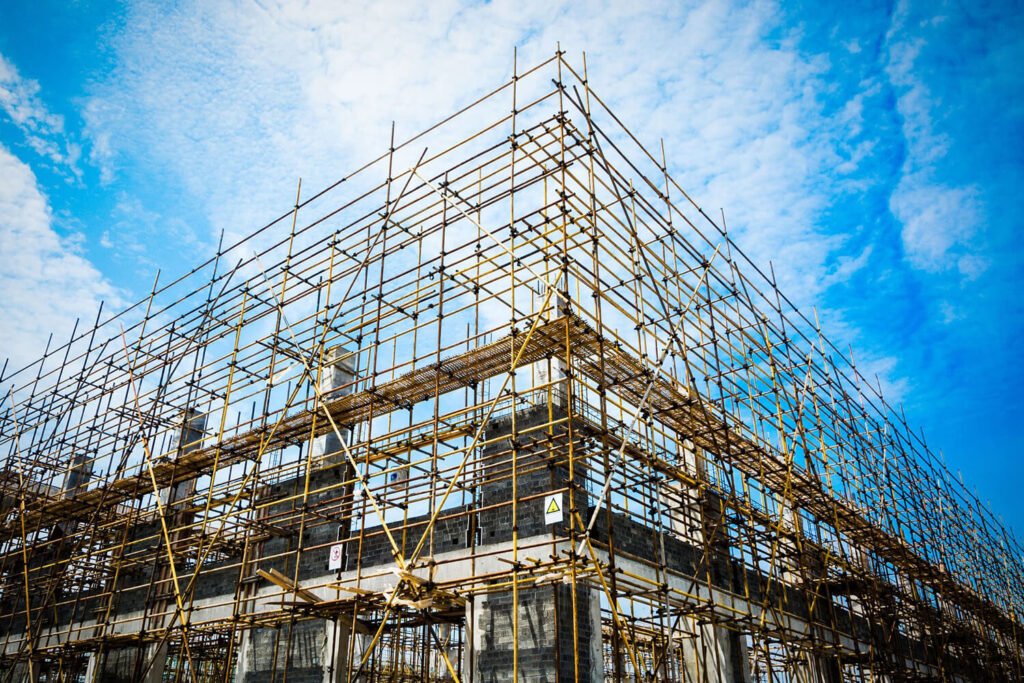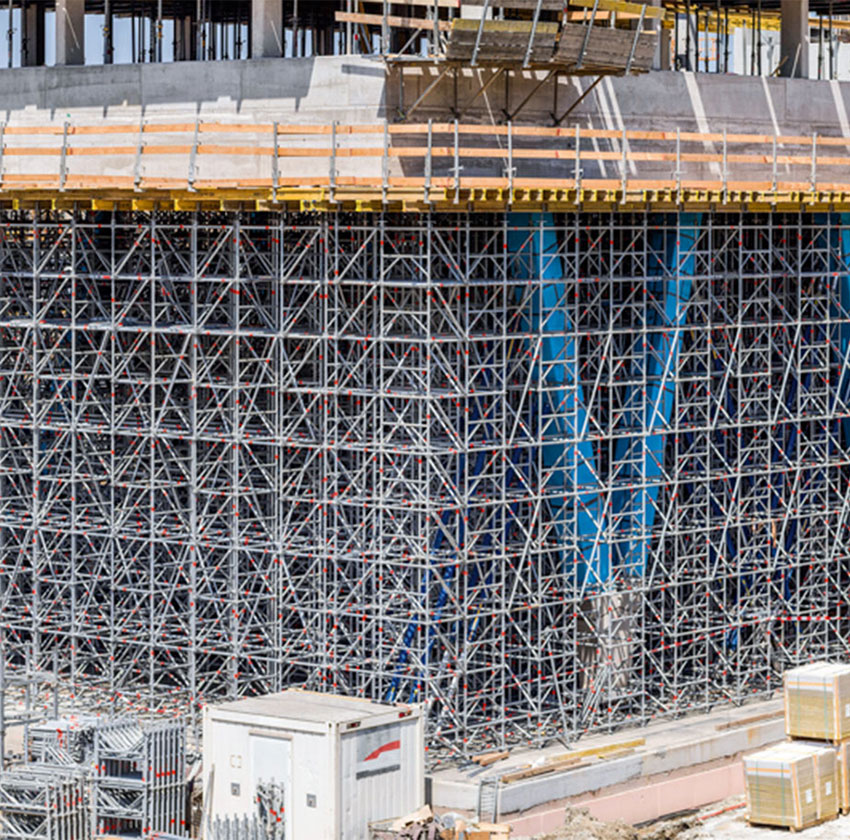Local Scaffolding Company Providing Reliable Services Throughout Surrey
Local Scaffolding Company Providing Reliable Services Throughout Surrey
Blog Article
Exploring the Various Types of Scaffolding Utilized in Building And Construction Tasks
The building and construction market relies greatly on different types of scaffolding to satisfy particular task demands, each offering distinct advantages and applications. Traditional framework scaffolding provides a strong foundation for basic tasks, while suspended scaffolding is crucial for job on skyscraper frameworks.

Standard Framework Scaffolding
Typical structure scaffolding is one of the most widely utilized methods in the construction industry due to its robustness and versatility. This system contains straight and vertical frameworks that are set up to develop a steady platform for workers and materials. The major elements include vertical posts, horizontal journals, and angled braces, which together offer a solid framework that can sustain considerable loads.
One of the vital benefits of traditional structure scaffolding is its versatility to numerous building tasks, ranging from residential structures to large industrial frameworks. The modular style enables easy assembly and disassembly, making it reliable for both short-term and long-term tasks. Furthermore, the system can be personalized in elevation and size, fitting different building designs and website conditions.
Safety and security is vital in scaffolding applications, and traditional framework systems are furnished with guardrails and toe boards to avoid falls and make sure employee protection. Regular evaluations and adherence to safety and security laws are essential in preserving the stability of the scaffold (Scaffolding). On the whole, traditional frame scaffolding stays an essential choice in the construction market, supplying a trusted platform for labor and enhancing overall project efficiency

Suspended Scaffolding
Put on hold scaffolding uses a distinct solution for building and construction tasks that need access to raised surfaces, specifically in circumstances where typical structure scaffolding might be not practical. This kind of scaffolding is normally suspended from the roofing system or top degrees of a structure, making use of a system of pulleys, ropes, and systems to create a working room that can be gotten used to numerous heights.
Among the primary benefits of suspended scaffolding is its versatility. It can be easily rearranged or lowered to fit changes in building and construction needs, making it excellent for tasks such as home window installation, façade job, and maintenance on skyscraper structures. Additionally, the marginal impact of suspended scaffolding enables far better use ground area in city environments, where area is often restricted.
Safety and security is an essential consideration in the use of suspended scaffolding. In general, suspended scaffolding offers a efficient and reliable service for accessing hard-to-reach areas in various construction situations, enhancing both productivity and safety on site.
System Scaffolding
System scaffolding, frequently considered a modern solution in the scaffolding sector, includes pre-engineered parts that can be promptly constructed and adjusted for different construction projects. Scaffolding. This sort of scaffolding is defined by its modular style, which permits versatility and performance on task sites, suiting various heights and architectural needs
Generally made from high-strength steel or aluminum, system scaffolding uses improved resilience and stability. The components consist of vertical messages, horizontal journals, and diagonal dental braces, which adjoin securely, making certain a robust structure. The style typically incorporates standardized fittings, streamlining setting up and disassembly processes, therefore lowering labor time and costs.

Rolling Scaffolding
Moving scaffolding is a functional choice to typical set scaffolding, made for flexibility and convenience of usage on building and construction websites. This sort of scaffolding contains a system sustained by frameworks with wheels, enabling workers to easily relocate it as required. The flexibility function considerably boosts efficiency, as it minimizes downtime related to disassembling and assembling dealt with scaffolding.
Typically created from light-weight materials such as aluminum or steel, rolling scaffolding uses a strong yet portable remedy for jobs requiring constant repositioning - Scaffolding. It is especially advantageous in jobs such as painting, drywall installment, and electrical work, where accessibility to various heights and locations is needed
Security is paramount in rolling scaffolding style, with features such as securing wheels to stop unplanned motion when in operation, and guardrails to secure workers from drops. Furthermore, many designs are flexible in height, suiting different task needs.
Cantilever Scaffolding

The design of cantilever scaffolding typically includes utilizing brackets or arms secured to a building or framework, making it possible for the system to extend exterior securely. Safety and security is vital; thus, these scaffolds have to be engineered to stand up to different tons and environmental conditions. Normal assessment and web link maintenance are important to ensure architectural stability and worker safety and security.
Cantilever scaffolding is preferred for its flexibility and reliable use space, making it a preferred option in urban atmospheres where space constraints prevail. It facilitates less complicated accessibility to high elevations, ultimately adding to the general efficiency of building and construction jobs. Similar to all scaffolding types, correct training and adherence to safety criteria are vital for employees using cantilever scaffolding.
Verdict
Conventional framework scaffolding supplies security, while put on hold scaffolding uses convenience for raised jobs. System scaffolding promotes fast setting up, and rolling scaffolding boosts flexibility for differing job settings.
Typical structure scaffolding gives a tough structure for basic jobs, while suspended scaffolding is essential for work on high-rise structures.Moving scaffolding is a versatile choice to typical set scaffolding, made for flexibility and convenience of usage on building sites. As with all scaffolding types, correct training and adherence to safety and security criteria are important for employees using cantilever scaffolding.
Conventional frame scaffolding gives security, while suspended scaffolding offers versatility for raised jobs. System scaffolding helps with quick assembly, and rolling scaffolding boosts wheelchair for varying Read More Here job settings.
Report this page